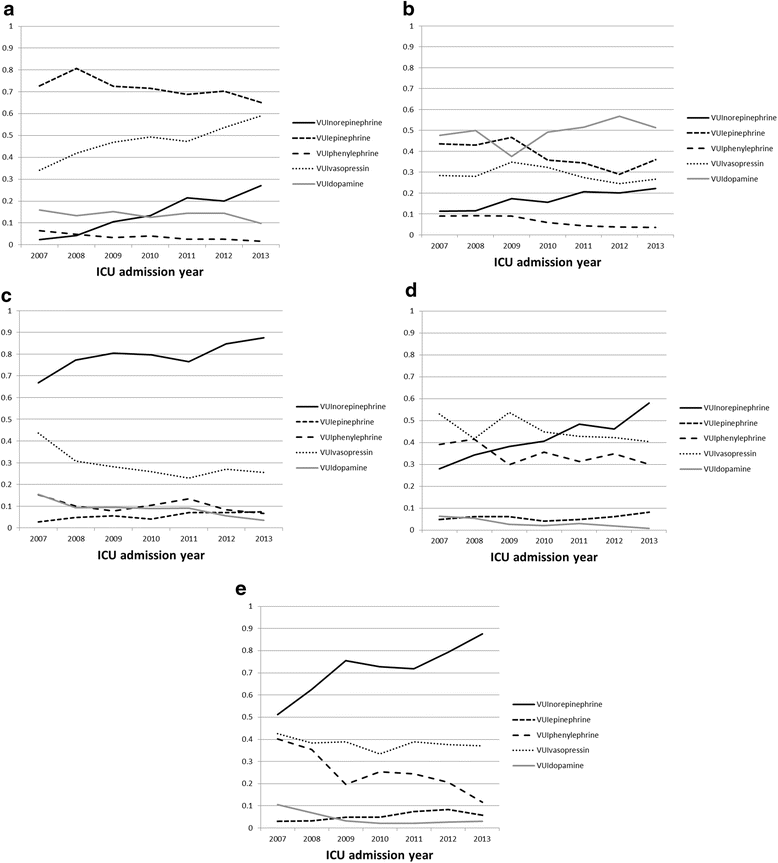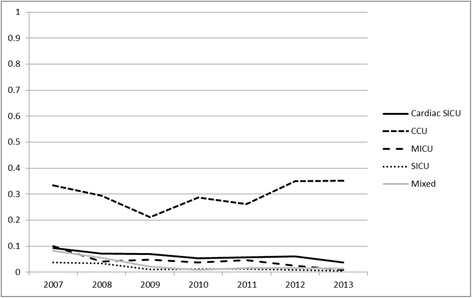Temporal trends in the utilization of vasopressors in intensive care units: an epidemiologic study
- PMID: 27154548
- PMCID: PMC4859949
- DOI: 10.1186/s40360-016-0063-z
Temporal trends in the utilization of vasopressors in intensive care units: an epidemiologic study
Abstract
Background: The choice of vasopressor use in the intensive care unit (ICU) depends primarily on provider preference. This study aims to describe the rate of vasopressor utilization and the trends of each vasoactive agent usage in the ICU over the span of 7 years in a tertiary referral center.
Methods: All adult ICU admissions, including medical, cardiac, and surgical ICUs from January 1st, 2007 through December 31st, 2013 were included in this study. Vasopressor use was defined as the continuous intravenous administration of epinephrine, norepinephrine, phenylephrine, dopamine, or vasopressin within a given ICU day. The vasopressor utilization index (VUI) was defined as the proportion of ICU days on each vasoactive agent divided by the total ICU days with vasopressor usage.
Results: During the study period, 72,005 ICU admissions and 272,271 ICU days were screened. Vasopressors were used in 19,575 ICU admissions (27 %) and 59,811 ICU days (22 %). Vasopressin was used in 24,496 (41 %), epinephrine in 23,229 (39 %), norepinephrine in 20,648 (34 %), dopamine in 9449 (16 %), and phenylephrine in 7508 (13 %) ICU days. The VUInorepinephrine increased from 0.24 in 2007 to 0.46 in 2013 and VUIphenylephrine decreased from 0.20 in 2007 to 0.08 in 2013 (p < 0.001 both). For epinephrine, dopamine, and vasopressin VUI did not change over the course of study.
Conclusion: Vasopressors were used in about one fourth of ICU admissions and about one-fifth of ICU days. Although vasopressin is the most commonly used vasopressor, the use of norepinephrine found to have an increasing trajectory.
Keywords: Dopamine; Epinephrine; Intensive care unit; Norepinephrine; Phenylephrine; Shock; Vasopressin; Vasopressors.
Figures




References
MeSH terms
Substances
LinkOut - more resources
Full Text Sources
Other Literature Sources

